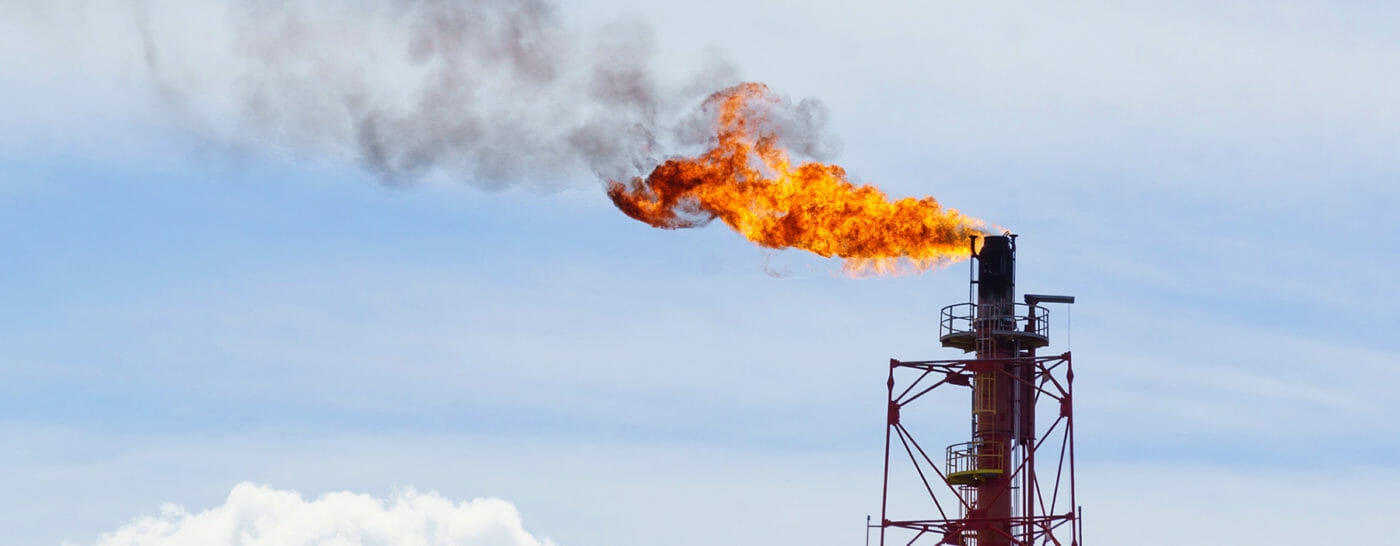
EPA Data Shows Greenhouse Gas Emissions from Oil & Gas Increase
When EPA released data on US industrial 2017 greenhouse gas emissions earlier this month, the oil and gas industry was quick to point out that their methane emissions had fallen between 2016 and 2017. We’ll explore the methane emissions trend in future blog posts. First, however, we want to look at the bigger picture, because it turns out that overall greenhouse gas emissions from the oil and gas industry actually increased between 2016 and 2017. The worst part of this story is a marked increase in the wasteful practice of flaring gas from oil wells, which was up 28% nationwide between 2016 and 2017.
Flaring happens when oil companies have no pipeline at an oil well, or the pipeline can’t handle all the gas from the well, so the companies flare off the gas they produce (or a portion of it) while continuing to produce oil. Flaring is awful for many reasons:
- It wastes huge amounts of resources – in 2017, the oil industry flared off at least as much gas needed to heat all the houses in New Jersey;
- It emits climate warming carbon dioxide pollution; and
- It emits soot and smog-forming pollution.

So, why are companies flaring so much gas? In both the Permian Basin in Texas and New Mexico, and the Bakken area of in North Dakota, which have led the increase in flaring, companies have been drilling for oil at a breakneck pace. And in these two basins, a lot of natural gas comes out of the ground along with that oil. In most cases, companies can anticipate when a basin will have high levels of associated gas, and they should be able to plan accordingly by building pipelines to take the gas from wells to processing facilities. But too often, companies ignore this planning step in the rush to drill more wells, or move ahead with drilling even though they know that they won’t be able to capture the gas they’ll produce. So, instead of capturing this gas and bringing it to market, they flare it.
In the Permian basin, CO2 emissions from flaring increased by 33% between 2016 and 2017. Nearly half of all the flaring in the country occurs in this basin. Permian flaring is widely expected to increase in 2019 – perhaps dramatically – resulting in more needless carbon pollution and more impacts on air quality in Texas and New Mexico.
In North Dakota, flaring previously peaked in 2014, driven by high oil prices and a lax regulatory environment. Since then, low oil prices have reduced the pace of well drilling, giving the opportunity for natural gas infrastructure to catch up with the wells. In addition, state-level flaring limits have provided an additional incentive for companies to reduce flaring levels, though these limits were never very effective (many companies flared above the state flaring limits without any sanction from regulators*). But as drilling started to pick up in 2017, flaring again began to increase too – and sadly, it reached record levels this summer. North Dakota is clearly doing little to keep flaring in check, and our air quality – and climate – needlessly suffer as a result.
Industry is not cleaning up wasteful flaring voluntarily, and overly permissive state guidelines like those in North Dakota are not reducing this pollution. That’s why we are fighting to preserve the Bureau of Land Management’s sensible 2016 standards for oil and gas development on federal and Tribal lands, which would require operators to properly plan new wells to ensure that gas from them is captured not flared, and ramp down flaring from existing wells. And, we will fight for state standards too, and continue to examine the health impacts of this wasteful, polluting practice.



